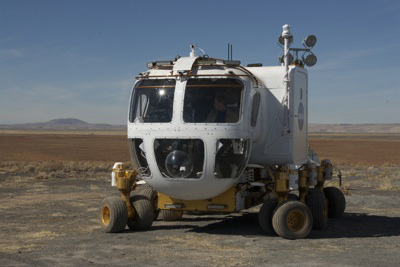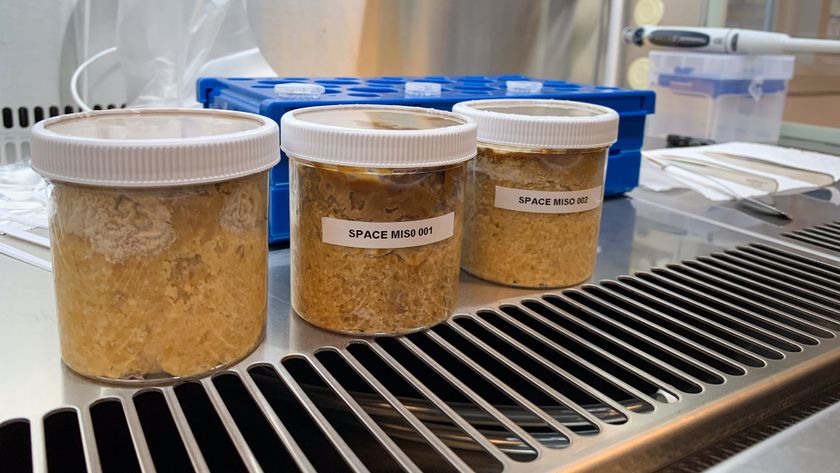NASA's 21st Century Moon Car

NASA's newmoon rover looks like it's been on TV?s "Pimp My Ride."
While theApollo-era vehicle that first landed on the moon in 1971 resembled a ricketydune buggy, NASA?s 21st Century rover plans look like a luxurylunar RV.
There maybe no more open-air lunar drives clad in bulky spacesuits for astronauts.Instead, future moon travelers can ride in style in an enclosed cabin completewith sleeping bunks for long rides. Bubble-shaped windows will provide apanoramic view.
The newvehicle, currently being designed by NASA as part of its Constellation programto revisit the moon by 2020, is called the Lunar Electric Rover (LER). It ridesatop a Chariot chassis, which astronauts can also drive separately for use as alunartruck.
"Certainlyit?s much more sophisticated, more capable and much more durable," saidFrank Peri, director of NASA's Exploration Technology Development Program atNASA Langley Research Center in Virginia, comparing the LER to the Apollorovers.
Whiledeveloping this new souped-up moon buggy, NASA engineers were mindful of someof the pitfalls of the earlierApollo versions.
"Wedid our homework and looked back and took that as a starting point," Peritold SPACE.com. "But we also took a lot of lessons from the Marsrovers, Spirit and Opportunity."
Get the Space.com Newsletter
Breaking space news, the latest updates on rocket launches, skywatching events and more!
On Monday,NASA will celebrate the 40th anniversary of the firstmanned moon landing on July 20, 1969. The first moon rover driven byastronauts, however, did not arrive until the Apollo 15 mission two yearslater.
Smoothride?on the moon
While theold rovers did an admirable job of transporting the Apollo astronauts aroundfor short distances, they didn't exactly do it in style and comfort.
"Itwas a pretty rough ride," Peri said. "It was pretty limited in itssuspension and ability to handle rough terrain."
The LERshould be able to navigate the moon's hills and craters with ease, and can evendrive forward, backward and sideways thanks to rotating wheels.
Anothermajor advance is the pressurized cabin, which is enclosed with air inside sothe astronauts can ride and work comfortably without their bulky suits on.
If theastronauts do need to venture outside their van, they can easily slip intospace suits attached to suitports at the back of the rover.
"Thatchanges the whole realm of exploration because you can be in a shirtsleeveenvironment and then if you see something interesting you can go out and get inyour suit in about 10 minutes - it?s a game changer," said John Olson,director of NASA's Exploration Systems Mission Directorate Integration Office.
AMoonbase on wheels
Inside theLER, comfy chairs easily convert into beds for sleeping, and there are evenbathroom and shower facilities onboard. All these amenities are designed to letfuture moon explorers travel abroad for extended periods, even weeks at a time.In contrast, the Apollo rover sojourns never lasted more than four and a halfhours.
Besideshaving more features, the new rovers should be much more durable than pastmodels.
Where theold rovers were made for one-time-use (after their batteries ran out they weredone), the new class will have rechargeable lithium ion batteries similar tothose in modern hybrid cars like Toyota's Prius.
"Whenwe went to the moon for the first time it was really kind of like a campingtrip," Peri said. "We didn?t care if things broke so long as we couldmake it back. This is going to be a trip to stay."
In fact,the prototypes being designed now for the moon are also intended to serve asthe basic transportation model for future manned missions to Mars.
- New Video - Rehearsing the Moon
- New Video - The Meaning of Apollo
- SPACE.com Special Report - THE MOON: Then, Now, Next
Fortyyears after astronauts first set foot on the moon, SPACE.com examines what we?vedone since and whether America has the right stuff to get back to the moon by2020 and reach beyond. For exclusive interviews and analysis, visit SPACE.comdaily through July 20, the anniversary of the historic landing.
Join our Space Forums to keep talking space on the latest missions, night sky and more! And if you have a news tip, correction or comment, let us know at: community@space.com.

Clara Moskowitz is a science and space writer who joined the Space.com team in 2008 and served as Assistant Managing Editor from 2011 to 2013. Clara has a bachelor's degree in astronomy and physics from Wesleyan University, and a graduate certificate in science writing from the University of California, Santa Cruz. She covers everything from astronomy to human spaceflight and once aced a NASTAR suborbital spaceflight training program for space missions. Clara is currently Associate Editor of Scientific American. To see her latest project is, follow Clara on Twitter.










